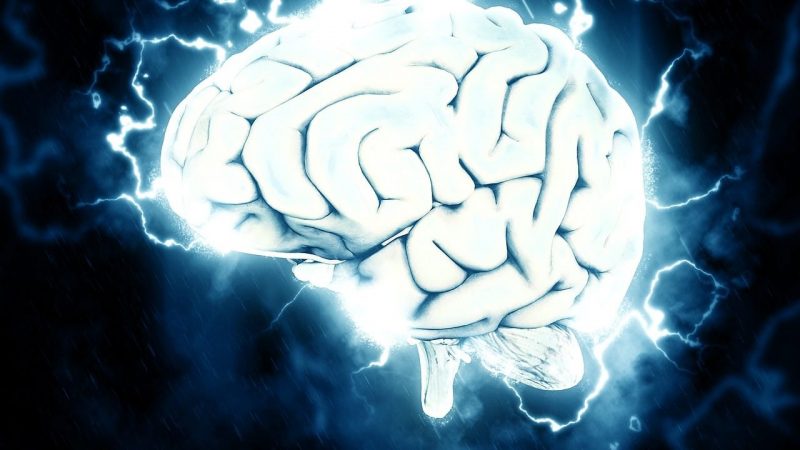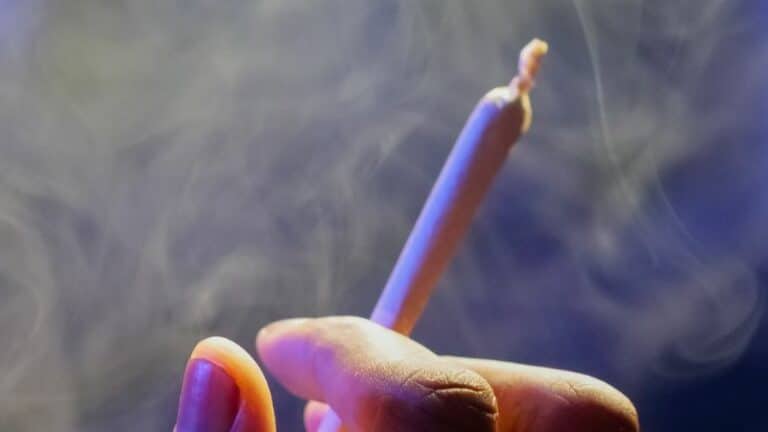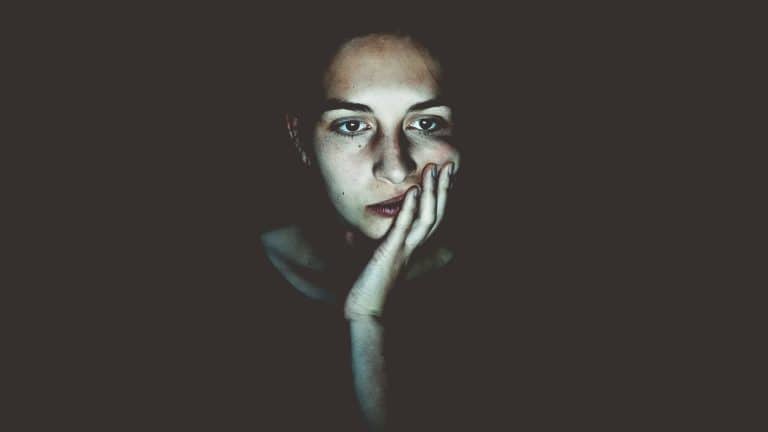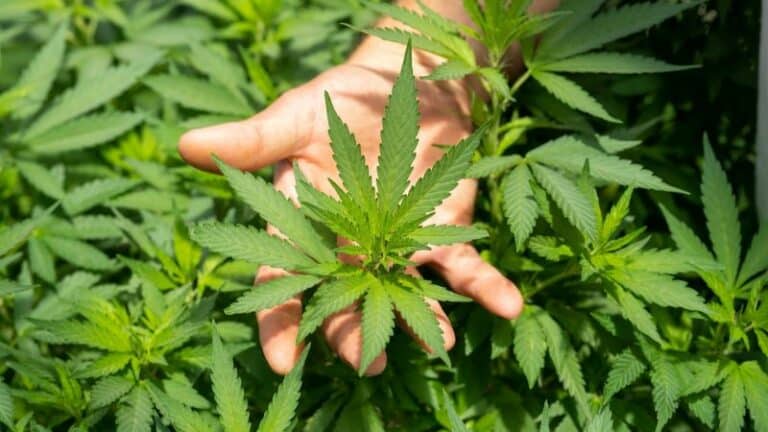40 Worrying Migraine Statistics That Are Often Overseen

Most of us get headaches at least once a month, and we seem to accept them as part of everyday life. But migraines are not just common headaches. In fact, migraine statistics show that this is a serious, disabling condition that causes sufferers to miss out on work and social events.
Accompanied by feelings of nausea and severe, throbbing head pain, when a migraine attack occurs, people feel the need to lock themselves up in dark, quiet rooms and throw away the key. However, this is no way to live.
Knowing all the facts and stats about migraines can help you see that you are not alone in feeling the pain and also teach you how to manage it better.
10 Migraine Statistics for 2022 to Bear in Mind
- About 1.2 million visits to the ER are due to acute migraine pain.
- One billion people across the world suffer from migraines.
- 16.4% of sufferers come from Central and South America.
- 2% of the global population experiences chronic migraines
- 39 million people in the USA are living with migraines
- 10% of US schoolchildren have migraines.
- 85% of people with chronic migraines are women.
- 28% of teens who are between 15–19 years old suffer from migraines.
- Strains with 15% THC and over are preferred by migraineurs.
- 30% of migraine sufferers use cannabis for pain relief.
Unfortunately, one billion people feel intense debilitating pain. Migraine is a disabling neurological disease, which makes it different from regular headaches. It is the third most common disease that affects more people than you think.
1. One billion people across the world suffer from migraines.
(MRF) (The Migraine Trust)
It is estimated that about one in seven people worldwide has migraines. These stats make migraines the third most common illness in the world, preceded by cavities and tension-type headaches.
2. 0.01% of people suffer from a rare migraine type called hemiplegic migraine.
(NCBI) (WebMD)
Migraine statistics worldwide show that 15% to 25% suffer from migraines in total. Therefore, hemiplegic migraine is extremely rare. It can cause unpleasant symptoms that include paralysis of one side of the body or the face that can last for up to 72 hours, although the symptoms usually stop within 24 hours.
3. 70%–90% of people who suffer from migraines experience migraines without aura.
(MedicineNet)
This is the most common form of migraine. It occurs with variable frequency — sometimes a couple of times per week, or even only once a year. Common symptoms are just as different, from pulsating headache, fever, and confusion, to diarrhea, vomiting, and so on.
4. Migraine prevalence by country data shows 16.4% of sufferers come from Central and South America.
(Hindawi)
11.4% of migraine sufferers come from Europe, 10.4% live in Africa, followed by 10.1% from Asia, and 9.7% from North America. The migraine incidence is highest among women (13.8%), school and college students (12.4%), and men (6.9%).
5. 39 million people in the USA are living with migraine headaches.
(MRF)
Around 12% of the US population, adults and children, are affected by migraines, which means there is a migraine sufferer in nearly one in every four US households. Obviously, the prevalence of migraine in the US is pretty high.
6. 18% of women in the US have migraines.
(MRF)
On the other hand, only 6% of men in the US experience migraines. Interestingly, up to 10% of kids are no strangers to this pain.
Who Gets Migraines and Why?
Anyone can suffer from migraines, although it’s most prevalent among women.
7. Children suffer from migraines as well as adults, migraine statistics reveal.
(MRF)
Although the symptoms most commonly appear in adolescence, almost half of migraine attacks happen before the age of 12. Even toddlers can get migraines. Recent studies indicate that baby colic could be an early form of migraine headache.
8. Migraine headaches facts inform there are two main categories of migraine — migraine with aura and migraine without aura.
(WebMD)
The term “aura” implies visual symptoms (flashes, lines). It can even be accompanied by the loss of vision for a short amount of time. That said, migraine can be divided into several subtypes: migraine with brainstem aura, chronic, hemiplegic, silent migraine, abdominal, menstrual, ocular, vestibular, and ophthalmoplegic migraine.
9. Migraine statistics tell us around 2.5%–4% of children under eight have recurrent migraines.
(American Headache Society)
At this age, boys are more likely to experience migraines than girls. Children do not experience the same symptoms as adults. Kids usually feel a throbbing pain in both sides of the head during an attack, which lasts for one to two hours, instead of the four-hour headache that adults experience.
10. 85% of people with chronic migraines are women.
(MRF)
According to chronic migraine statistics, almost 50% of female migraineurs experience an attack every month, while 25% have at least four severe headaches every month. On top of that, it is estimated that one in four women will experience a migraine headache at some point in their lives.
11. Fluctuations in estrogen levels are one of the most common reasons for migraines among women.
(American Headache Society)
This makes sense as one of the most common migraine causes, in addition to stress and sensory stimuli, are fluctuations in estrogen levels, as migraine stats confirm. Also, around 60% of female migraine sufferers experience menstrual migraines, which exhibit similar symptoms as common migraine headaches.
12. Endocannabinoid system dysfunction has been considered as one of the causes of migraines.
(WebMD)
A person’s endocannabinoid system (ECS) controls various functions, from sleep to pain response. Cannabinoids, found in cannabis, change how cannabinoid receptors in the brain and body function and thus reduce pain signals.
13. Age affects migraine rates. Only 10% of women and 5% of men experience migraines when they turn 70 years old.
(WebMD)
Migraine symptoms reduce with age. In fact, they are more prevalent among younger people. 92% of women and 74% of men experience headaches between the ages of 21 and 34.
14. Most migraines are hereditary. There’s a 50% chance that the child will inherit migraines if the parent has one.
(MRF)
Around 90% of people living with migraines have had a family member who has also experienced migraine attacks. On top of that, a child who has one parent suffering from migraines has a 50% chance of getting it too. If both parents are migraineurs, chances of developing the illness go up to 75%.
15. Migraine facts and figures regarding youth indicate 28% of teens that are between 15–19 years old suffer from migraines.
(MRF)
Migraine is more prevalent among boys before puberty. However, when it comes to adolescence, the prevalence becomes higher in girls. 23% of girls and 8% of boys will experience migraines by the time they are 17.
What Exactly Happens and Why Are Migraines So Bad?
A migraine attack can include various neurological symptoms.
16. A third of migraineurs experience pain on both sides of the head during an attack.
(MRF) (Mayo Clinic)
Although a migraine, exhibited as severe, pulsating pain, is typically localized on one side of the head, it can affect both sides in some migraine cases. During an attack, sufferers are also sensitive to light, sound, smell and often feel sick.
17. A third of migraineurs experience warning signs before a migraine attack, migraine facts reveal.
(WebMD)
Some people experience symptoms of the prodrome or pre-headache phases hours or days before a migraine strikes. These include strange food cravings, feelings of tiredness and crankiness, as well as constipation or diarrhea.
18. Migraine attacks can last for 72 hours.
(Mayo Clinic) (CDC)
How long do migraines last? A migraine headache can last between 4 and 72 hours. It is usually accompanied by nausea, loss of appetite, and heightened sensitivity to light and smell.
19. About 20% of people affected by migraines experience an aura, according to migraine statistics.
(Mayo Clinic)
Although it is different for everyone, a migraine aura is typically characterized by blurry vision or light flashes. In some rare cases, it can even impair speech and movement. Auras usually last 10 to 30 minutes.
20. Almost 80% of migraineurs also experience a migraine hangover.
(American Migraine Foundation) (WebMD)
The final stage of the migraine attack, also called postdrome, happens after the headache subsidies, migraine prevalence stats show. It can last a few hours, but sometimes it lasts more than a day.
21. You are more likely to suffer a stroke if you experience migraine auras.
(WebMD)
Although migraines won’t necessarily trigger a stroke, people with aura migraines are at a higher risk, especially women under 45. Both men and women who suffer from migraines with aura are also at a higher risk of having heart disease. Other medical problems people with migraines might experience include high blood pressure, seizures, depression, hearing issues, fibromyalgia, and even problems with PTSD.
22. 56.6% of the people with chronic migraines are more prone to depression.
(HeadacheJournal)
Higher amounts of pain attacks and migraine symptoms are linked to higher rates of anxiety and depression. That said, chronic migraine is associated with 15 or more headaches that occur within a month and last up to 4 hours, while episodic migraines are linked to less than 15 daily headaches per month.
23. Migraine is the eighth most disabling condition on the planet.
(New Milford Hospital)
In addition to other headache conditions, migraine is one of the leading causes of disability in the world, according to migraine disability stats. At the same time, noncommunicable diseases (e.g., cardiovascular and respiratory diseases) are still the leading cause of disability globally.
24. 79.5% of coronavirus patients with previous headache problems reported having different headaches during the infection.
(BMC)
Based on one study, 50% of the surveyed believed their new headache was utterly different from the one they experienced before getting infected, while 29.5% thought there were some differences.
Moreover, the same migraine coronavirus study shows that people who had a history of headaches but weren’t infected by COVID-19 also noticed a difference. In other words, while 62.7% of people reported having identical headaches, 13.9% of people reported having completely different attacks.
25. 59.6% of migraine sufferers reported having more frequent migraine attacks amidst the global pandemic.
(BMC)
The changes were also noticed in migraine severity, with 64.1% of migraine sufferers reporting more intense migraines. A moderate increase was noticed by 35.1%.
In addition to that, coronavirus and migraine data implies that 22.5% of people experienced such harsh attacks that resulted in ED visits.
26. Patients with migraines are two times more likely to experience suicidal behaviors.
(Frontiers)
What is more, compared to episodic migraine patients, chronic migraine patients have higher suicide rates by 42.9%. Furthermore, migraine is associated with various psychiatric disorders, like depression, PTSD, and anxiety, as indicated by migraine suicide statistics.
27. The economic burden of migraines in the US is $78 billion per annum.
(AJMC)
90% of people with migraines cannot work or even function due to the severity of pain during an attack. What’s more, chronic migraine sufferers spend $8,500–$9,500 on migraine-related treatments each year.
Given that this is a widely spread condition, it’s worrying that the funding for migraine research is pretty low compared to other scientific studies. For example, in 2019, the budget for migraine research was $31 million, while the cancer research fund was $6.6 billion.
Migraine Treatments Success & Failure Rates
How can migraines be treated?
28. About 1.2 million visits to the ER are due to acute migraine pain.
(MRF)
Despite the ER visits, over 50% of all migraineurs are never diagnosed. The vast majority of people with migraines don’t consult a doctor or get migraine medications for their pain.
29. In 2019, there were as few as 500 certified headache specialists in the US, migraine stats report.
(Everyday Health Group)
In other words, there’s one specialist for 78,000 patients. The numbers are devastating, knowing how people who experience 15 or more headaches each month should see a headache specialist, i.e., a doctor who is specialized in headache disorders treatment, regularly.
30. 30% of migraine sufferers have experimented with cannabis to get rid of extreme pain.
(PR Newswire)
82% of migraine sufferers believe it to be a beneficial tool for pain relief. Migraine statistics from 2020 indicate that inhaling cannabis can reduce the severity of migraines and headaches by 50%.
31. There are two categories of migraine medication.
(Mayo Clinic)
One type is used during migraine attacks and aims to treat symptoms; the other is preventive medication, which is taken regularly and designed to reduce the severity or frequency of migraines.
32. Excedrin Migraine is usually prescribed to treat acute headache pain.
(Healthline) (Statista)
Excedrin Migraine drug facts show that it is mainly used to treat migraines. Excedrin is an OTC pain killer. It is a combination of caffeine, aspirin, and acetaminophen. Due to high prevalence rates, sales of Excedrin Migraine generated $96.1 million in the USA in 2019.
Similarly, Advil is the leading analgesic for minor aches and pains. Hence it is little wonder it generated $449.5 million in sales in the given year.
33. Ubrelvy is the first oral anti-CGRP approved by the FDA.
(Healint)
As an alternative to Triptans, and DHE, Ubrelvy can be taken before migraine attacks, and it should provide fewer side effects. The most usual side effects are dry mouth, tiredness, and nausea.
34. Cannabis and migraine statistics in the US suggest medical marijuana could be used as an alternative to opioids.
(Medical News Today)
Even 81% of survey respondents stated that marijuana for migraines was more effective alone than used together with opioids, while 97% agreed that they would decrease their opioid intake when using marijuana. Even though they are commonly prescribed pain relievers, patients have trouble using them due to the numerous side effects of opioids.
35. Regular intake of magnesium (a daily dose of 400–500mg) can reduce the attacks by 41.6%.
(Healthline)
Magnesium oxide is often used to treat migraines. While it can be taken in many forms (like pills), it can also be administered by food. Bananas, avocado, almonds, kefir, and pumpkin seeds are a good source of magnesium.
36. Nutrition facts and migraine are very much connected as the pain can be triggered by certain types of food.
(WebMD)
Although the exact cause of migraine is still a mystery, our diet plays a significant role when it comes to triggers. In fact, for 10% of people, food is the leading cause of headaches. Soy products, chocolate, olives, vinegar, cheese, and “safe” food additives are known to be headache triggers.
37. THC has 20 times more anti-inflammatory properties than aspirin.
(NCBI) (Healthline)
The two components of cannabis mostly related to pain management are THC and CBD. Both compounds ease inflammation, but migraine headaches facts prove that compared to NSAIDs, their side effects seem to be less dangerous.
38. Strains with 15% THC and over are preferred by migraineurs.
(Greencamp)
According to a Colorado University study, the average number of painful episodes was reduced in subjects that used medical cannabis. People living with migraine pain report that the most effective strains of marijuana for migraines are the ones that are rich in THC and ease sleep. Purple Kush and OG Kush are some of the most popular marijuana strains for migraines.
39. Yoga can reduce headache frequency by 50%.
(American Migraine Foundation) (Healthline)
Migraine sufferers statistics and various studies imply that you can use yoga as an alternative treatment for migraines. This practice can relieve tension, especially in the cervical spine or the neck. In addition to that, yoga can reduce the pain, frequency, and migraine duration.
40. Migraine frequency can be reduced by prolonged use of medical cannabis.
(AJMC)
According to one study, based on migraine patients that used medical cannabis for three years as a migraine treatment, 60% of the surveyed reported having less frequent headaches. However, investigators of this study are still not sure if this is a direct result of the medical cannabis treatment or a side effect of the improved sleep quality.
Final Thoughts
Are migraines common? Yes, they are. Considering the 38 million Americans suffering, in no way could they be defined as a rare disease. Are they dangerous? A migraine may not directly kill you or result in long-term hospitalization, but it does increase the likelihood of suicidal behavior. It seriously affects your physical and mental health and inhibits your daily activities.
There are medications you can try, although they could lead to other complications such as medication-overuse headaches. Luckily, the statistics point to other migraine remedies, like CBD oil, that can treat the symptoms with little to no unwanted side-effects.
FAQs
What causes migraines for most people?
It’s believed that migraines are associated with temporary changes in the brain’s blood vessels, chemicals, and nerves. We still don’t know the exact uniform cause of this condition, but migraines can occur due to temporary changes in brain chemicals. A plethora of situations can trigger them, such as stress, fatigue, the beginning of the menstrual period, intake of a particular food, etc.
Even though you can’t cure migraines, painkillers, triptans, and anti-emetics can help you reduce its symptoms in addition to lying in a dark room.
How many migraines a year is normal?
It’s typical to experience 24–48 migraine attacks per year since most people have migraine attacks two or four per month. However, this is not set in stone. Some people experience headaches every day, while others suffer from migraines only once or twice a year. Then again, migraine attacks can last from 4 hours to 72 hours.
Is migraine classed as a disability in the UK?
It’s typical to experience 24–48 migraine attacks per year since most people have migraine attacks two or four per month. However, this is not set in stone. Some people experience headaches every day, while others suffer from migraines only once or twice a year. Then again, migraine attacks can last from 4 hours to 72 hours.
Is migraine classed as a disability in the UK?
Migraine can be classified as a disability under the Equality Act provided it is severe and frequent.
According to the Act, being disabled implies having a physical or mental impairment that stops you from doing day-to-day activities, like reading a book, watching TV, talking, walking.
To find out if you fall under the Equality Act, you need to see a doctor who will assess if the Act can cover your migraine.
Is migraine a symptom of coronavirus or not?
Yes and no. Headache can be one of the COVID19 symptoms but they are said to differ from migraines. 14% of covid patients report having headaches that are similar to migraines. Besides headaches (which are a less typical symptom), covid patients are likely to experience the following: difficulty breathing, chest pain, confusion, sore throat, dry cough, etc.
What percentage of the population has migraines?
About 12% of the world population suffers from migraines. In other words, this condition affects 1 in 10 people. As for the US, about 15% of Americans are in pain.
When it comes to migraines without aura, aka the most common type of migraines, migraine statistics show us that 70%–90% of migraine sufferers experience this type.





